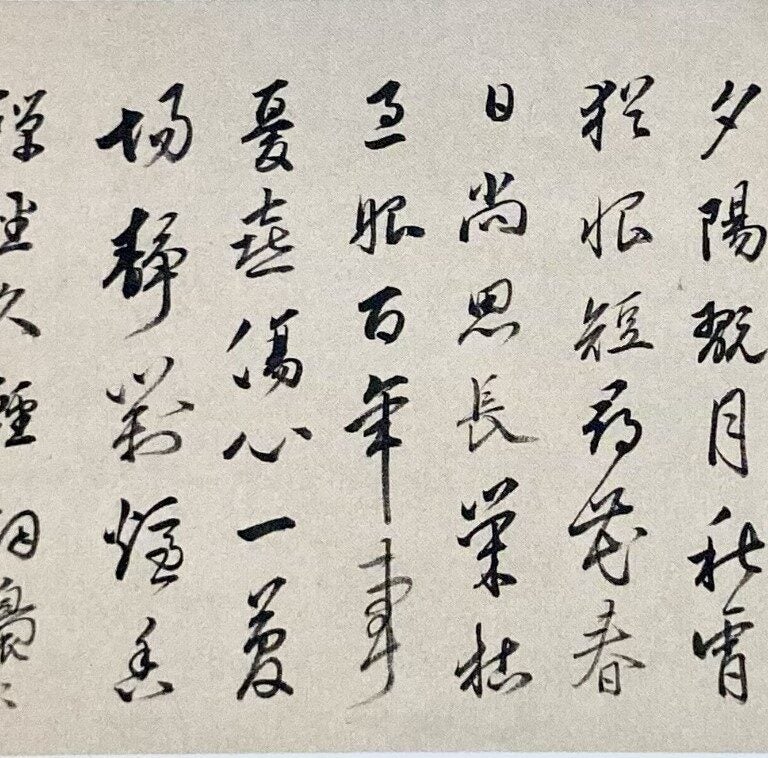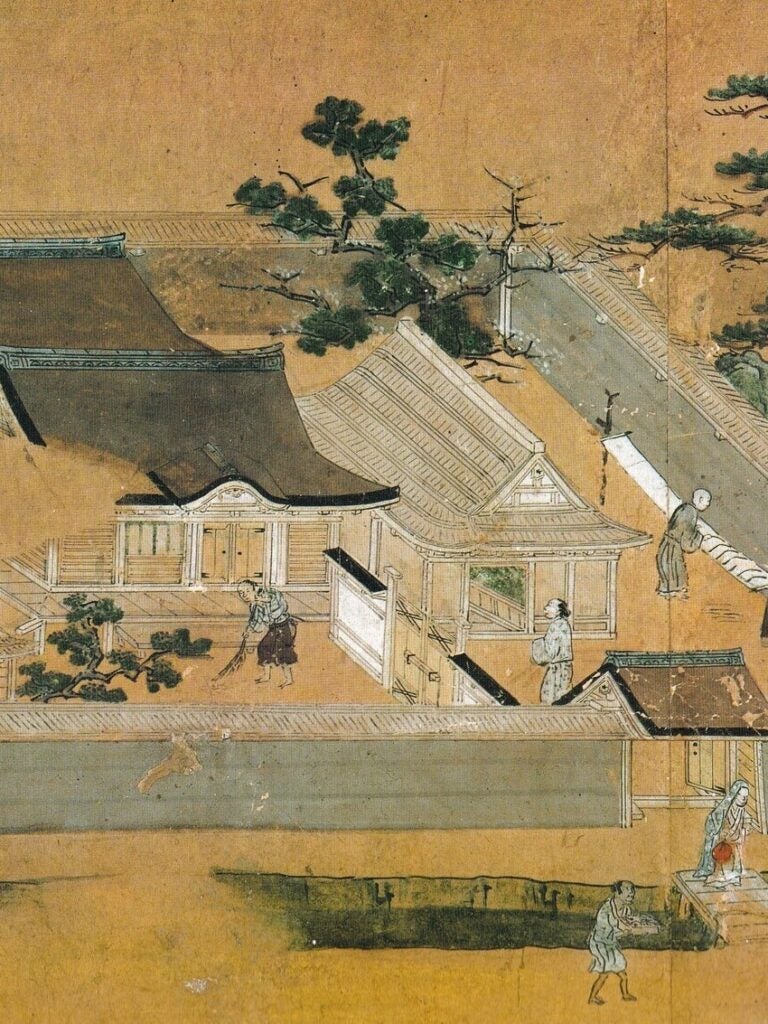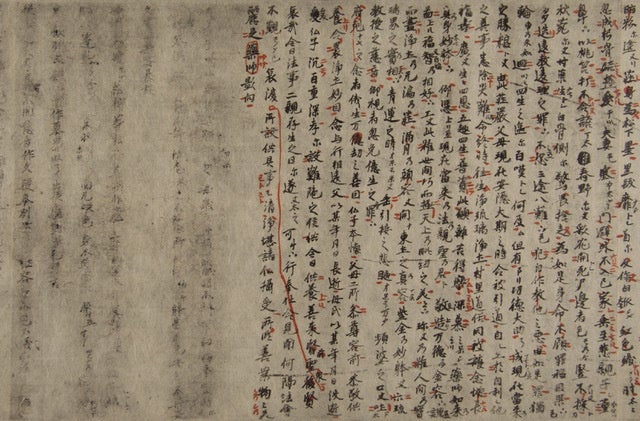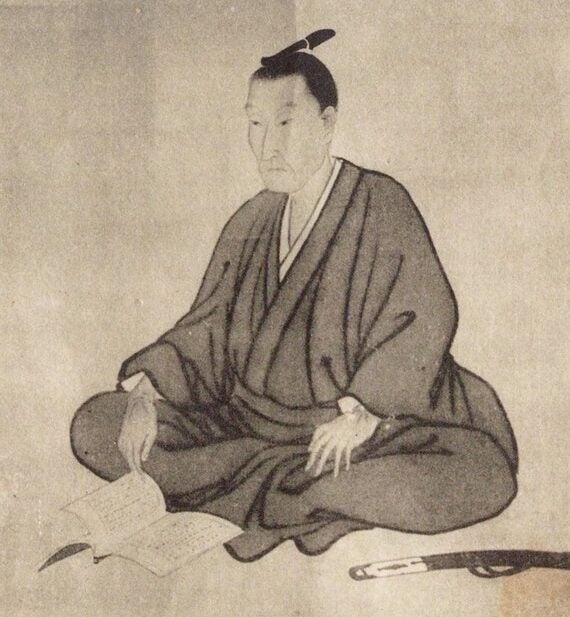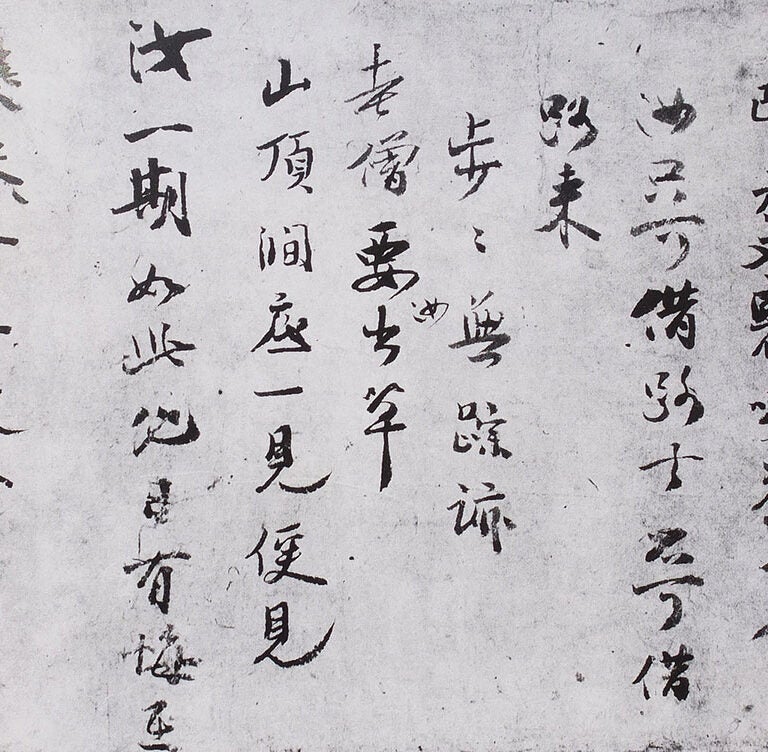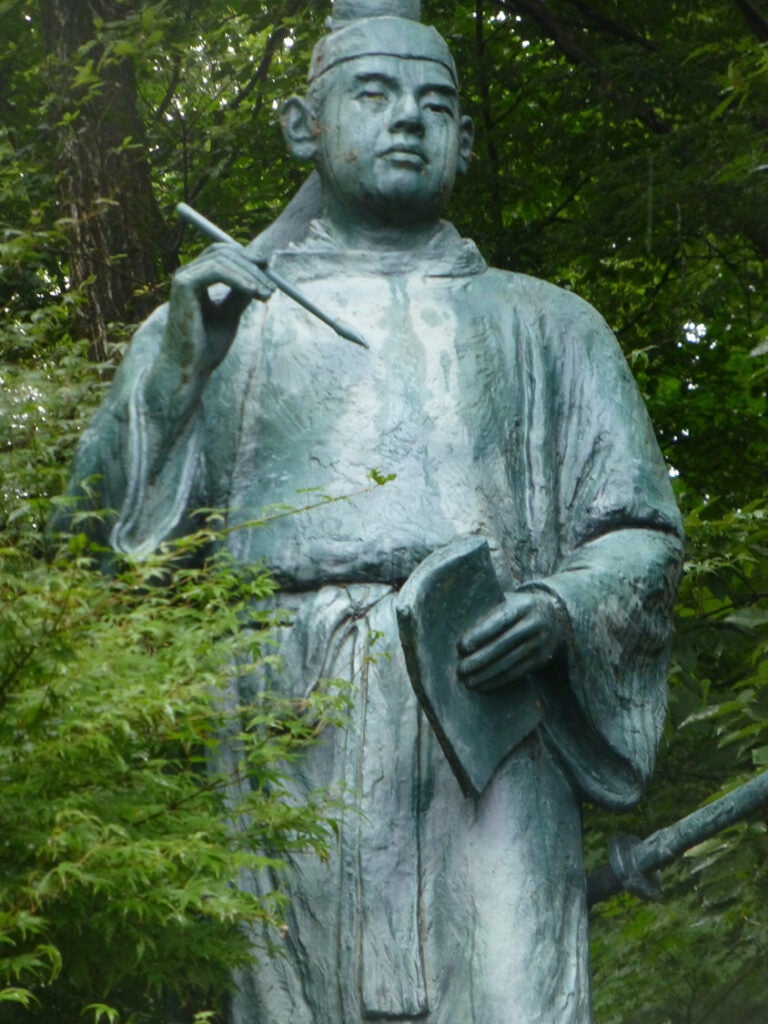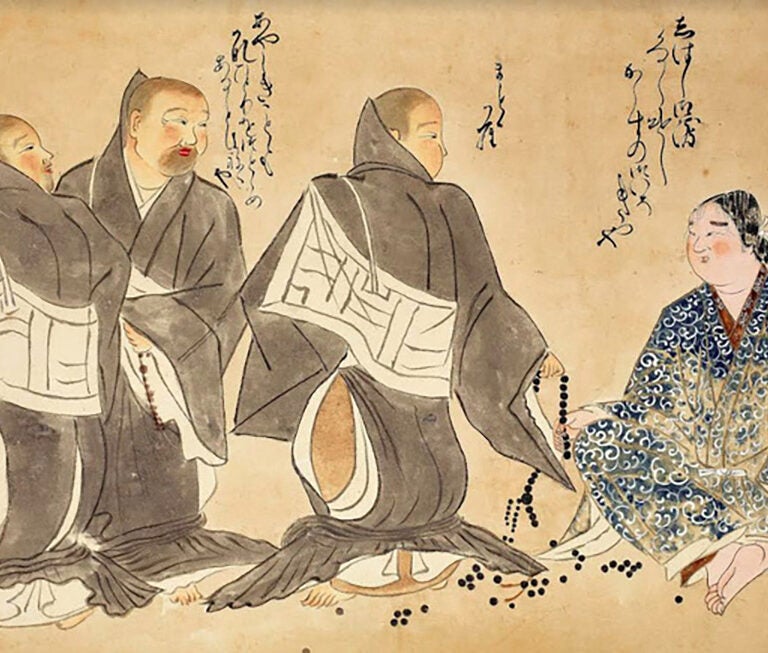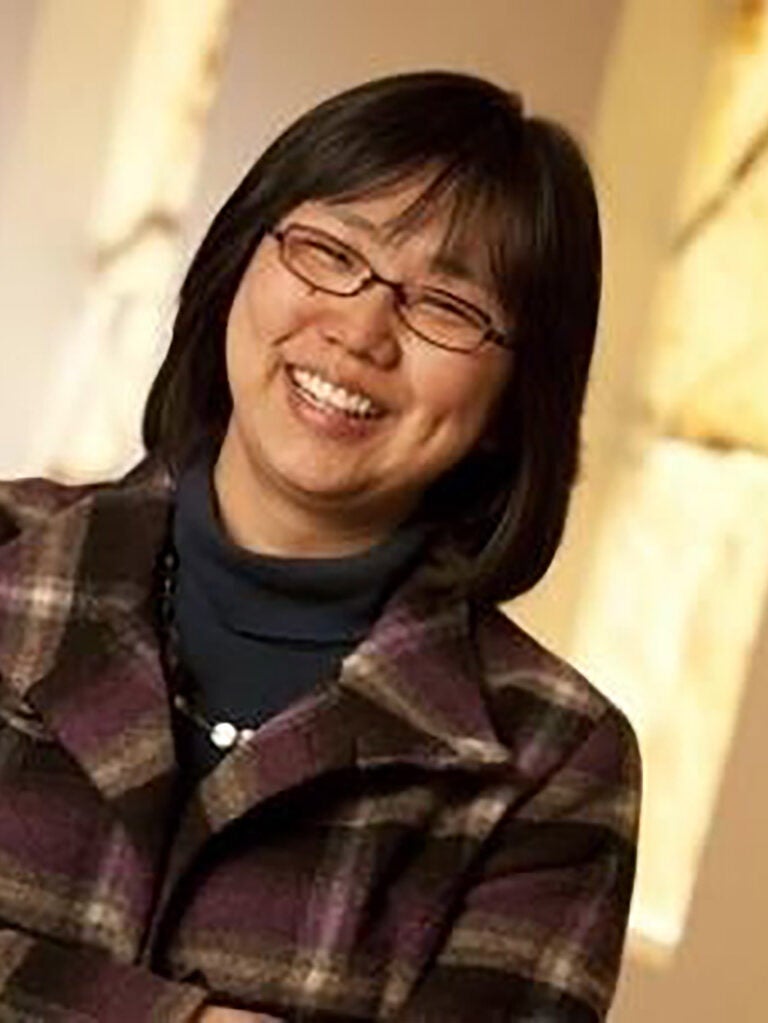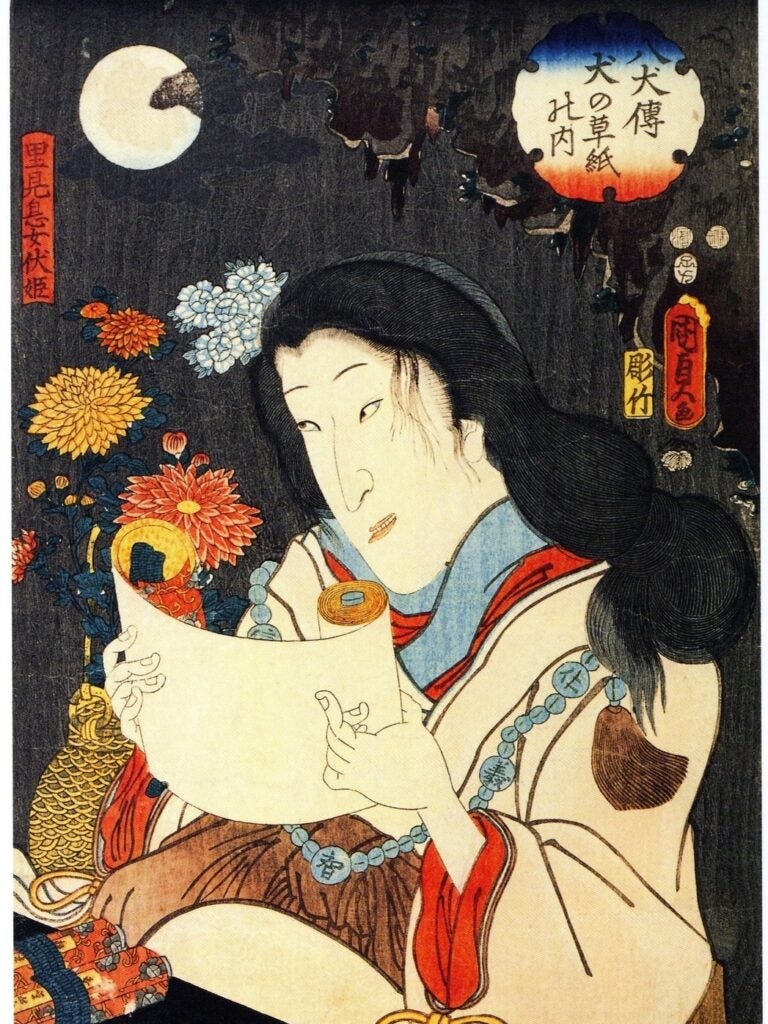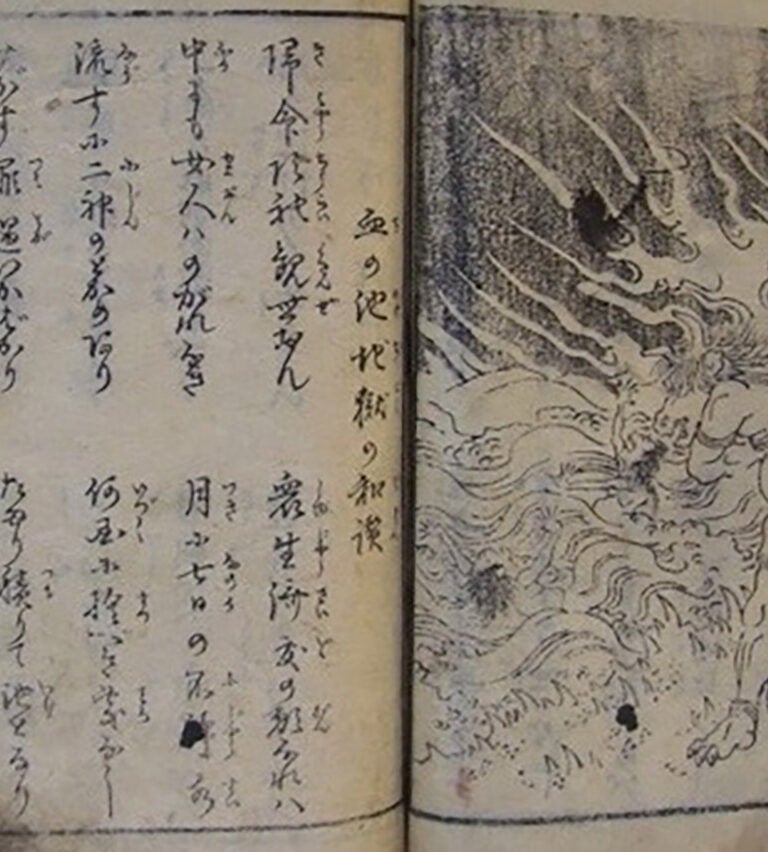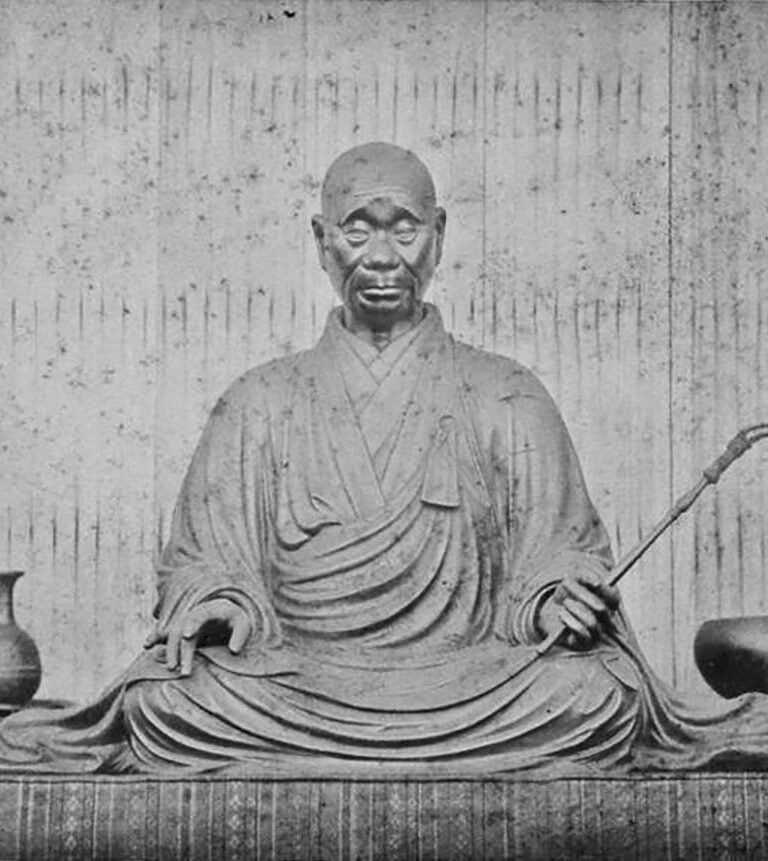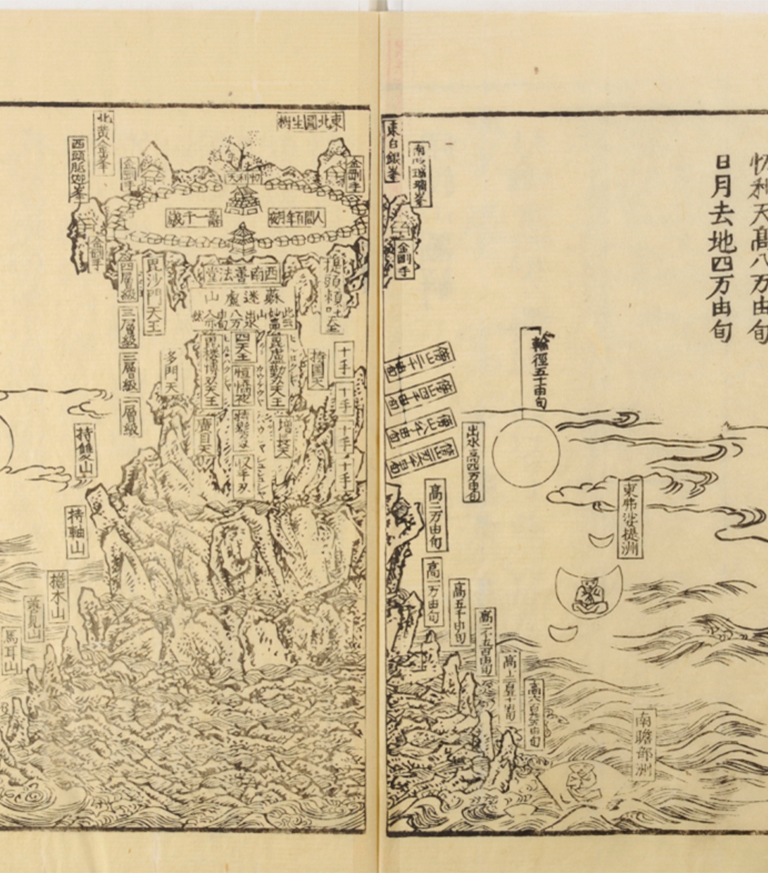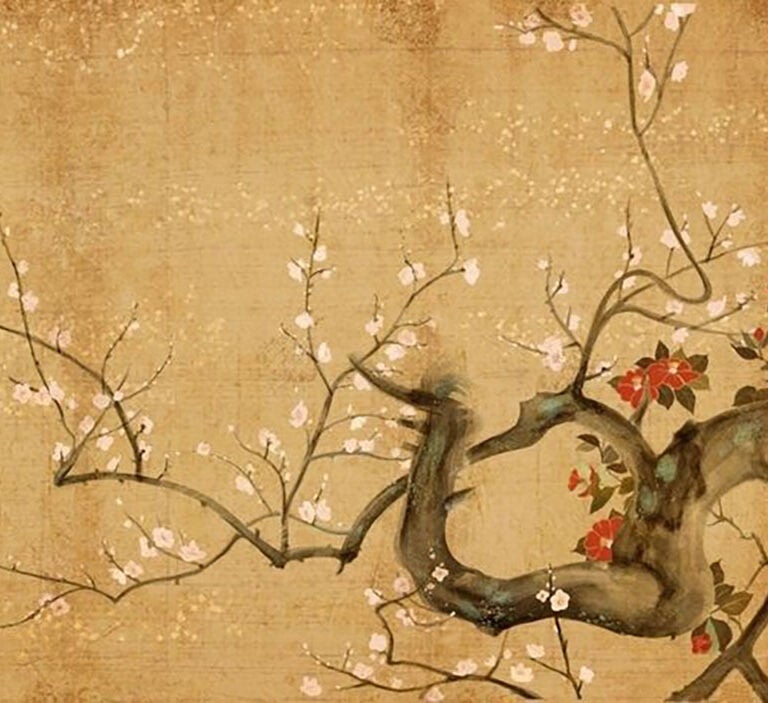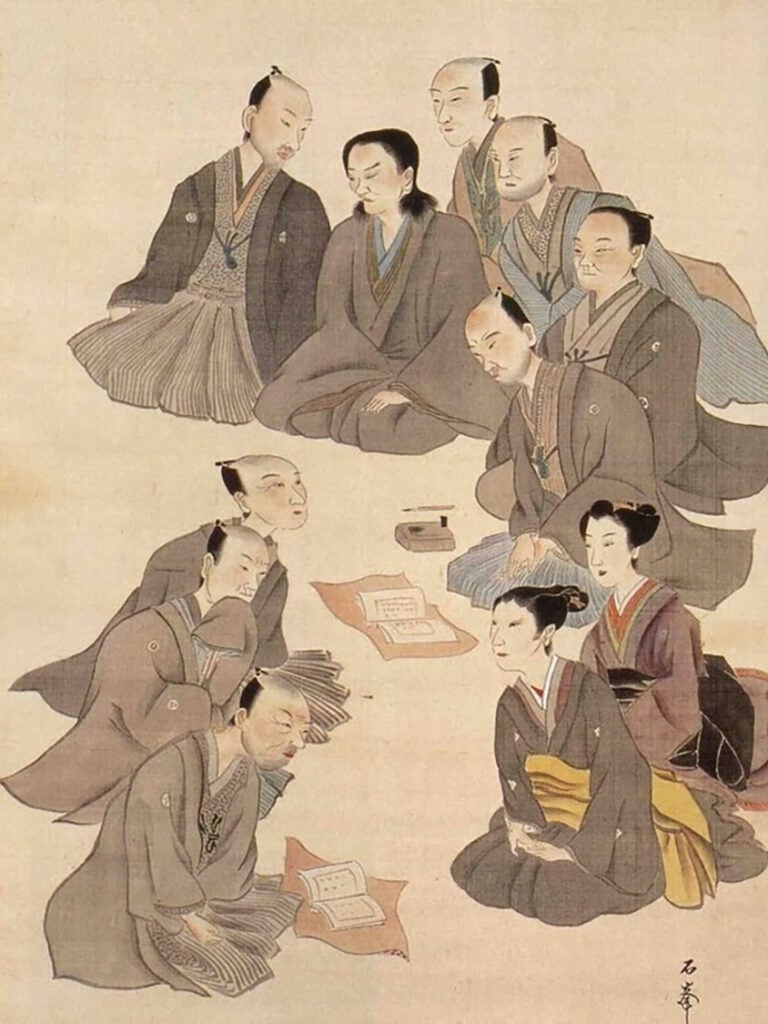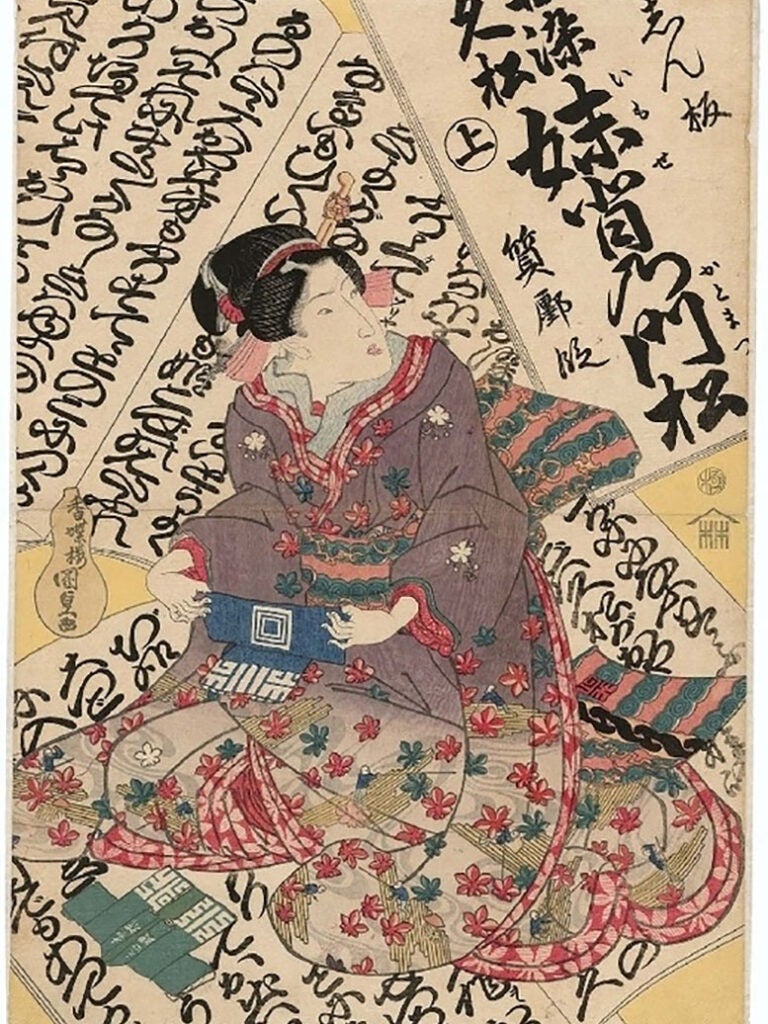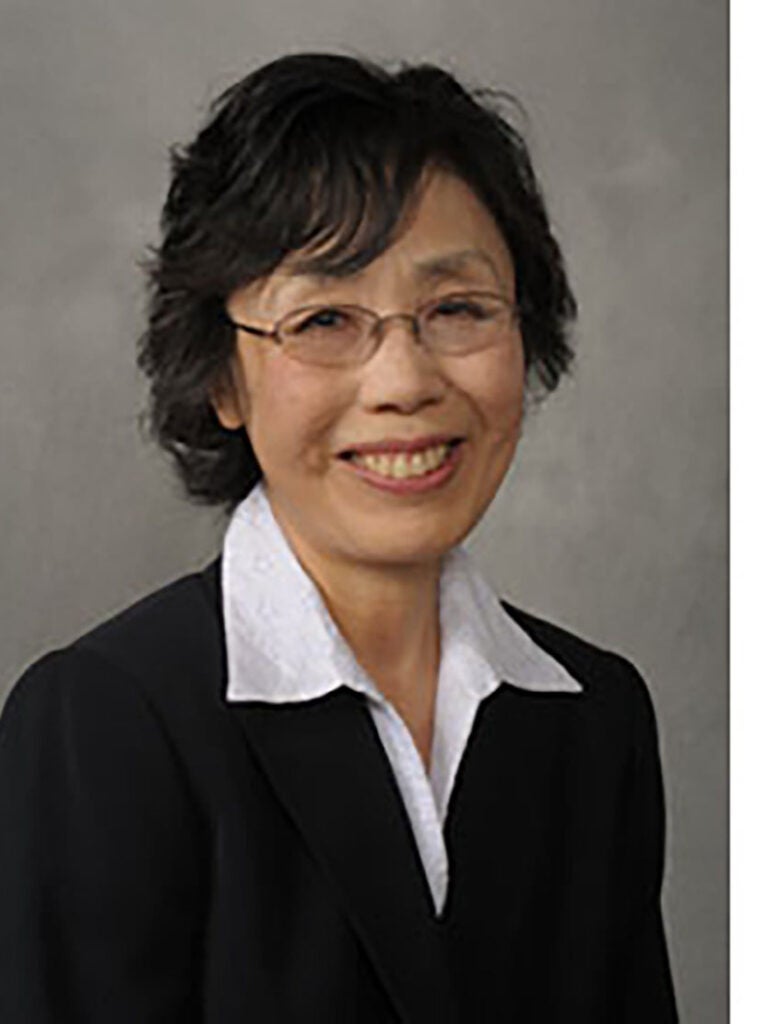The purpose of this project is to foster greater understanding of premodern Japan…
…through methodological innovation, attentiveness to newly available historical materials, and creative combinations of existing disciplinary approaches. It also seeks to solidify its role as a hub for scholarly collaboration among Japan specialists worldwide by sponsoring symposia, workshops, and lecture series.
Events
Wednesday, April 24, 2024
“Subjects About Which the Master did not Talk: Late Edo Translation of Japanese Ghost Stories into Sinitic”
Matthew Fraleigh, Brandeis University
“Spatial Translations of Edo: Nineteenth Century Kabuki and the Sumida River”
Satoko Shimazaki, UCLA
“His Blade Bore Well Its Name, or: (S)wordplay and Translating Eight Dogs”
Glynne Walley, University of Oregon
Friday, March 22, 2024
In early modern Japan (1603-1868), many imperial princesses were sent to live out their lives in special Buddhist convents. There, they created a unique culture that combined the secular values of the court and the religious values of Buddhism. One of the cultural activities they engaged in was composing Sinitic poetry (kanshi), which was traditionally written for and by men. The Sinitic poetry composed by imperial princess nuns has been largely overlooked within the field of Japanese Sinitic poetry studies. My research aims to fill that gap by providing an in-depth analysis of the Sinitic poetry of Taisei Shōan (1668-1712)…
Thursday, October 26, 2023
In medieval Japan, the number of female monastics increased as the Zen schools actively included women in their proselytization efforts. Mugai Nyodai (1223-1298) is known as a representative example of a female Zen priest from this period. I will address her life and ministry and will also discuss what we know about the early history of Keiaiji, the women’s temple she established…
Wednesday, January 18, 2023
Can we access the religious lives of impoverished individuals in the premodern world? This talk proposes that we can. I will introduce evidence from a previously untranslated manuscript to show how preachers actively promoted doctrines aimed to appeal to poor provincial villagers in ninth-century Japan, often promising them wealth in return for humble donations or sometimes even simple faith…
Tuesday, October 22, 2019
A talk by Matthew Fraleigh (Brandeis University). During the tumultuous mid-nineteenth century, as Japan faced foreign incursions and domestic upheaval, politically-minded youths took action, challenging the authorities, decrying government policies, and occasionally launching violent attacks. Though these young men (and a few women) had a wide range of loyalties and orientations, they shared a political fervor that often found expression in traditional verse forms…
Friday, November 22, 2019
Buddhism flowed between the Chinese continent and Japan – by Japanese pilgrims, Chinese émigré monks, merchants, texts and other objects. This is often described as a transmission from China to Japan. However, from diaries, travelogues, manuscripts, and hagiographic writing of the 11th to 14th centuries, we also learn that Japanese and Chinese monks frequently could not use spoken communication with each other…
Thursday, January 30, 2020
The complex nature of premodern Japanese literary production, and Japanese writers’ use of a continuum of scripts and languages, ranging from pure Japanese to pure Chinese, depending upon the genre, purpose and audience of their writing, is well known, however, little attention has yet been paid to the critical attitudes displayed by judges and participants to the use of Chinese material in the composition of waka poems presented for competitive consideration in uta’awase (poetry competitions)…
Thursday, February 21, 2019
Daigoji nanshoku-e [Daigoji’s Illustrations of male-male love], more commonly known as Chigo no sōshi [A booklet of acolytes] (ca. 1321) is a collection of five stories characterized by caustic humor and sexually explicit images of chigo’s (adolescent boy acolytes) infidelities to their master priests. In the literary tradition of medieval chigo monogatari (acolyte tales), this work is of great importance in that it reflects a master priest’s perspective and furnishes vivid depictions men’s sexual fantasies with chigo…
Friday, April 12, 2019
In this workshop, Prof. Uejima will offer a broad introduction to the classification, handling, and reading of medieval Japanese works, from documents to scrolls and books. Participants will learn about the production, categorization, handling, and uses of such materials. In addition to providing a comprehensive overview of the material aspects of these works (how they were folded, bound, sealed, etc.), Prof. Uejima will also walk us through a close analysis of a variety of different works, including handwritten documents, sutras, and shōgyō 聖教…
Thursday, January 25, 2018
This presentation reconsiders these Tōdaiji objects within two distinct praxes: the preceding and contemporaneous practice of ritual burial; and the emerging practice of caching objects inside a statue (zōnai nōnyūhin 像内納入品)…
Glynne Walley – “Virgin Purity Assailed By Scurrilous Rumors: Interpreting Hakkenden in Meiji Japan”
Thursday, September 1, 2016
Eight Dogs (Hakkenden, serialized 1814-1842) by Kyokutei Bakin (1767-1848) was one of the mid-19th century’s most popular and influential novels. In this talk, Walley (University of Oregon) will be exploring a significant case of interpretation of Eight Dogs by Meiji writer Kitamura Tōkoku (1868-94)…
Friday, September 9, 2016
In this lecture, Professor Naomi Kodate, who has written prolifically on women and Buddhism in Japan’s late medieval and early modern periods, will discuss the history of special hells associated with women. In particular, she will discuss these hells as they appear in popular sermons and storytelling, in hymns chanted by women’s confraternities, and in the visual record…
Friday, November 11, 2016
Paul Groner and Lori Meeks will lead participants through close readings of passages from the Chōmonshū, a collection of teachings attributed to the Vinaya revivalist Eison (1201-1290). This collection of short sermons and anecdotes provides great insight into the social and cultural life of Buddhist monasticism in medieval Nara…
Tuesday, September 1, 2015
In this presentation, Matsumoto will consider the difference between Chinese and Japanese concepts of the sovereign’s territory. She will also consider the meaning of “place” within Buddhist worldviews since premodern Japanese enthronement ceremonies drew on Buddhist logic…
Thursday, January 14, 2016
In parts of Tokugawa Japan, every other pregnancy ended in an abortion or infanticide. Why did contraception not take their place before the twentieth century? Fabian Drixler (Yale University) explores this unusual contraceptive practice in Tokugawa Japan…
Saturday, April 30, 2016
This symposium will explore questions related to canon inheritance, canon formation, and canon disintegration. It is a sequel to the Loose Canons event held at the University of Southern California in April 2015. We will continue the conversation, investigating the following questions: how do habits of quotation and other episodes of appropriation suggest evaluative judgments about “sources”?…
Friday, February 27, 2015
In the late Tokugawa period, ordinary people began to amass significant wardrobes of silk crepe and patterned cotton, and clothing became important as both a marker of social status and a medium of exchange. A “good” robe could be worn around town, establishing the refinement or respectability of its owner, but it could also be exchanged for cash at a pawnshop or cut up and refashioned into some other useful item…
Friday, February 27, 2015
Standard historiography of the church in Kyoto during the Christian Century (1549-1650) does not mention the remarkable leader, Naitō Julia, once an abbess of a Jōdo convent, who became a successful evangelist for the Jesuit mission in Japan. She founded and led a society of Christian women catechists, whom people called the Miyaco no bicuni (nuns of Kyoto)…
Saturday, April 25, 2015
This symposium seeks to investigate questions related to canon inheritance, canon formation, and canon disintegration: how do habits of quotation and other episodes of appropriation suggest evaluative judgments about “sources”? How have these practices affected literary composition in the archipelago, composed in Japanese wabun and Chinese-styled kanshibun? A group of specialists will consider these issues across the span of premodern Japanese history…
Friday, April 11, 2014
In this lecture Prof. Matsuo will introduce some of the films he has produced, films that document aspects of this ongoing cultural exchange between Japan and the Chinese continent. He will also consider the unique aspects of festivals and performative arts in Japan, both of which carry strong religious or cultic elements…

